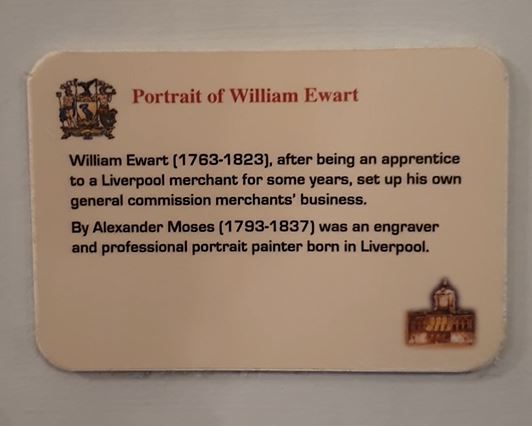William Ewart

Hanging in the Gladstone Room of Liverpool Town Hall is the portrait of William Ewart (1763-1823), by Alexander Mosses. The plaque (pictured) currently in place reads “after being an apprentice some years, set up his own general commission merchants business.”
I think something more appropriate would read:
“William Ewart (1763-1823) served his apprenticeship in Liverpool under George Dunbar, the last person to advertise an enslaved person for sale in the British press. After completing his apprenticeship, Ewart became a broker, trading in many slave produced goods, including: tobacco, cotton, sugar and mahogany, becoming very wealthy in the process. George Canning, MP for Liverpool and future prime minister, referred to Ewart as ‘unquestionably the most powerful commercial man in Liverpool.’ As well as being senior partner in the brokerage firm, Ewart and Rutson, he also did business with his closest friend and fellow Scotsman, John Gladstone. In 1803, on Ewart’s advice, they provided mortgage finance to the owner of Belmont, a slave plantation in Demerara. This began Gladstone’s investments in the colony that would lead to him becoming one of the largest and richest owners of enslaved people in the British Empire by the time of abolition in 1833. In honour of William and the role he had played in his financial success, Gladstone named his son, William Ewart Gladstone, after his friend and made him godfather. The child would become an MP and eventually serve four times as Prime Minister of the United Kingdom, becoming arguably the most important statesman of the nineteenth century. William Ewart’s own son and namesake would serve as MP for Liverpool. When William Ewart died in 1823 he left a massive fortune of approximately £330,000.”

